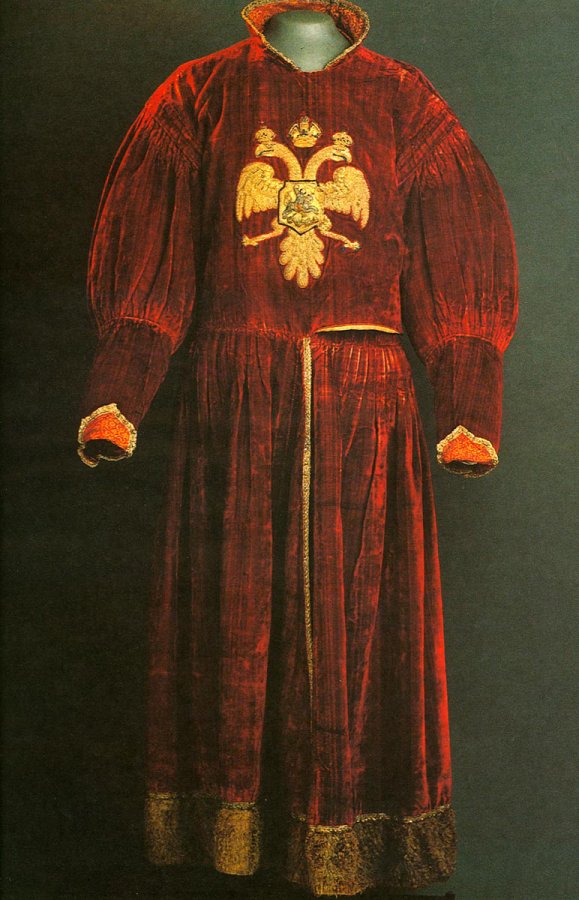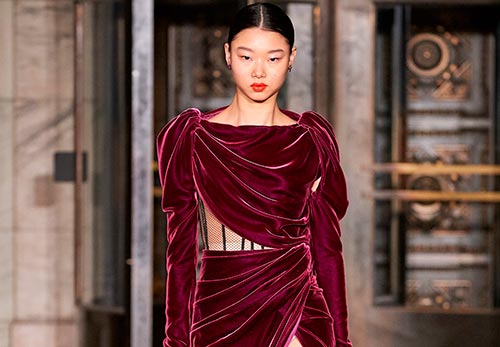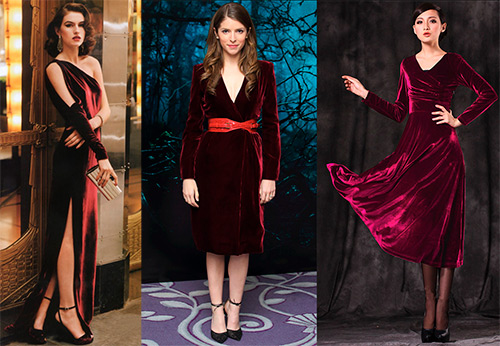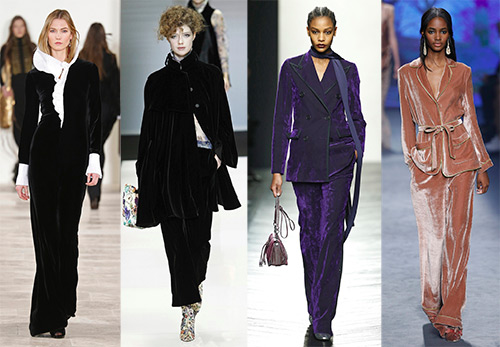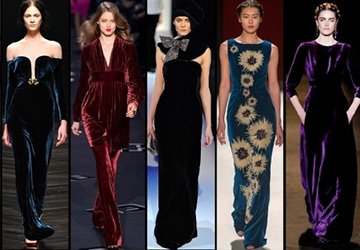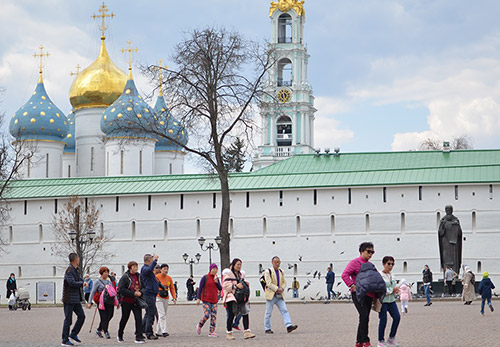Fashion history
Velvet in Russia
When did people start wearing velvet clothes in Russia? The first information about this appears at the turn of the 15th - 16th centuries. Confirmations can be Russian sources, in which there are lists left by wealthy princes, where among the descriptions of inherited property, you can see outfits, jewelry and velvet coats on sables, embroidered with gold and pearls.
The Russian people loved to transfer part or even all of their acquired property to monasteries. For example, some orders on posthumous and memorial contributions to monasteries have survived - in 1530 the monks of the Trinity-Sergius Monastery sold a sable coat made of velvet embroidered with gold, which was kept as a memorial contribution for Prince Vasily Lvovich Glinsky. Rich women, leaving the world for a monastery, presented their elegant clothes to their relatives and just kind people.
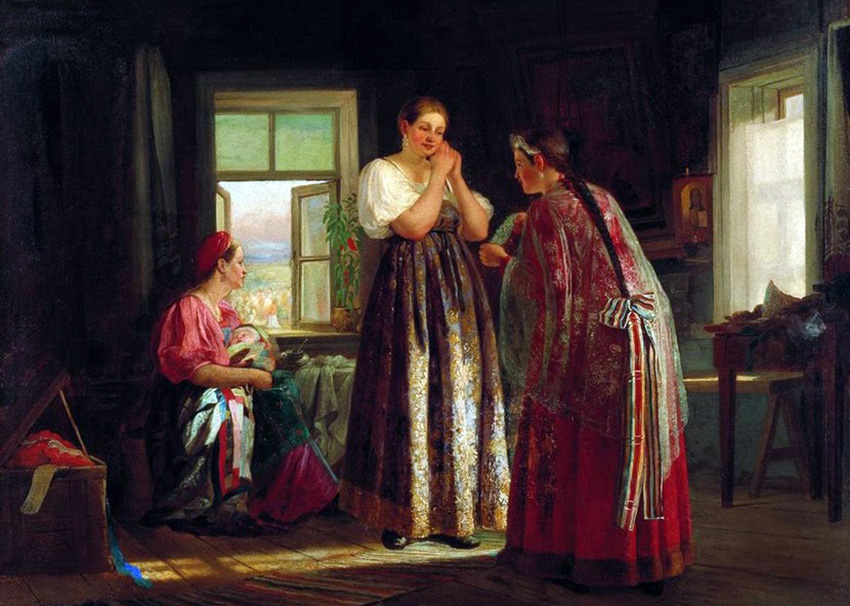
Velvet entered Russia from Italy, Iran, Turkey, China. Depending on where this luxurious fabric came from, or who brought it to Russia, the velvet was called - Venetian, Florentine, German, Turkish, etc.
Velvet in Russia, as well as in Europe, was expensive. All who had wealth sought to acquire expensive fur coats, sewn from elegant fabric, to which velvet was numbered. Therefore, it was lodged only with valuable fur. Fur coats were insulated with sable, lynx, squirrel, ermine, polar fox fur. For example, in 1520 - 1540 a war horse cost 1–3 rubles, and a fashionable velvet outfit cost the same.
The scraps were never thrown away during sewing, they were left for appliqués. Wealthy princes and boyars did not spare money for their daughters and dressed them like princesses. In the 16th century, all wealthy people sought to acquire velvet things. Velvet outfits became an obligatory component of wedding ceremonies in families of wealthy people - velvet fabrics were used as gifts at the wedding, young people sat on velvet pillows.
In the second half of the 16th century, velvet began to be used to decorate military equipment, the interior of houses, books, the manufacture of religious objects, the decoration of temples, etc.
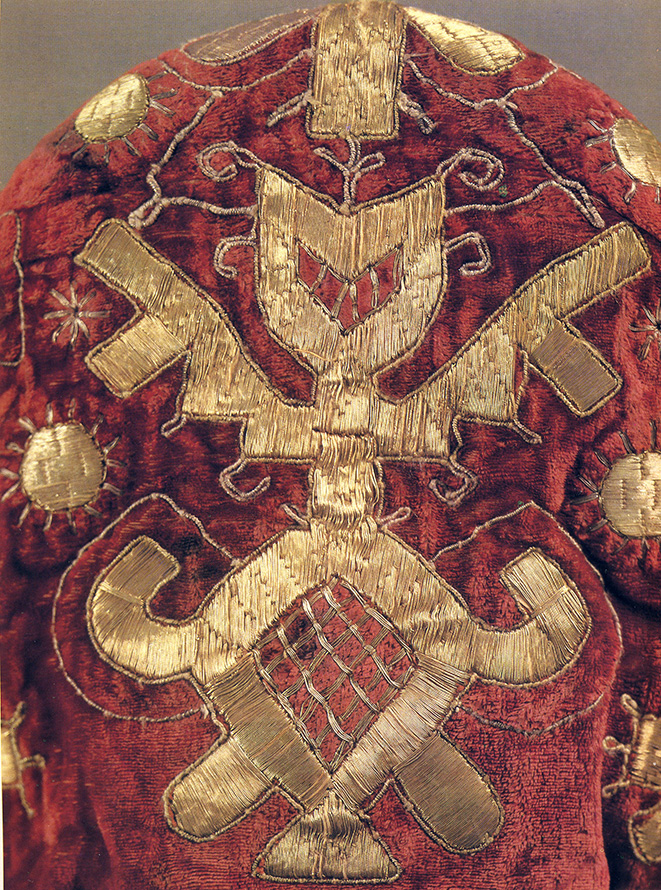
But the most luxurious velvet outfits were possessed by the Moscow sovereigns. For example, Tsar Ivan III, when he married off his daughter, gave her ten cuts of velvet as a dowry, each of which was 10-15 cubits long. The fabrics were of extraordinary beauty with gold thread, some were brought from Turkey, others were of Venetian production. A roll of scarlet velvet was put in the bride's carriage, along which she, like on a carpet, should go to her future husband.
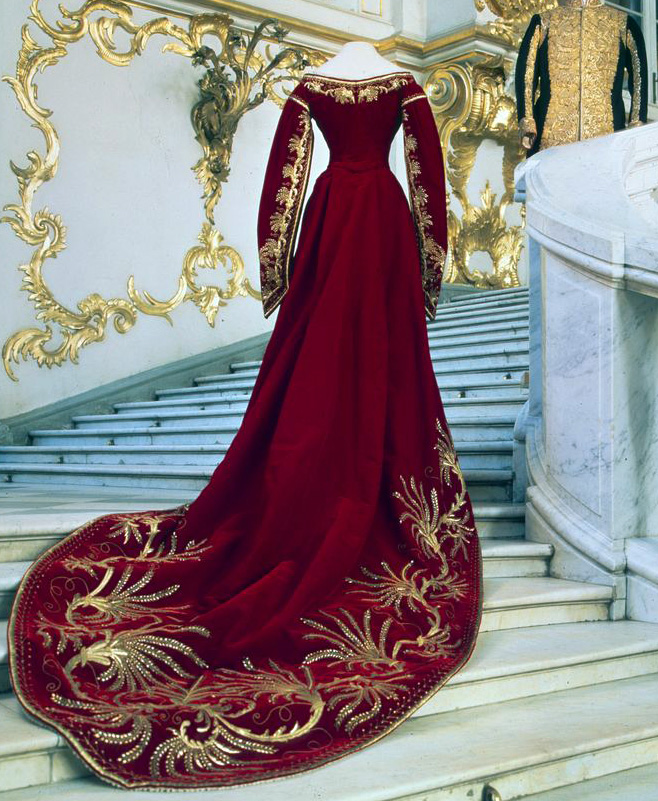
In 1570, German ambassadors, feasting at Ivan the Terrible, noted that the tsar and his son Ivan Ivanovich were in luxurious velvet outfits adorned with precious stones and pearls. Both Ivan the Terrible and his son were outfitted for war beyond measure luxuriously. Collars - "necklaces" made of expensive materials, embroidered with silk, decorated with gems and pearls were sewn to the outer clothing. The caps were velvet. Tsar Ivan the Terrible himself had more than one such hats. The caps trimmed with different furs were made of Venetian velvet.
Velvet fabrics depending on the combination of threads, they were of different types. Some were called smooth, others shaggy, looped, semi-looped, buried (with convex patterns made in two planes), some of them used spun gold or silver in the duck and many others.
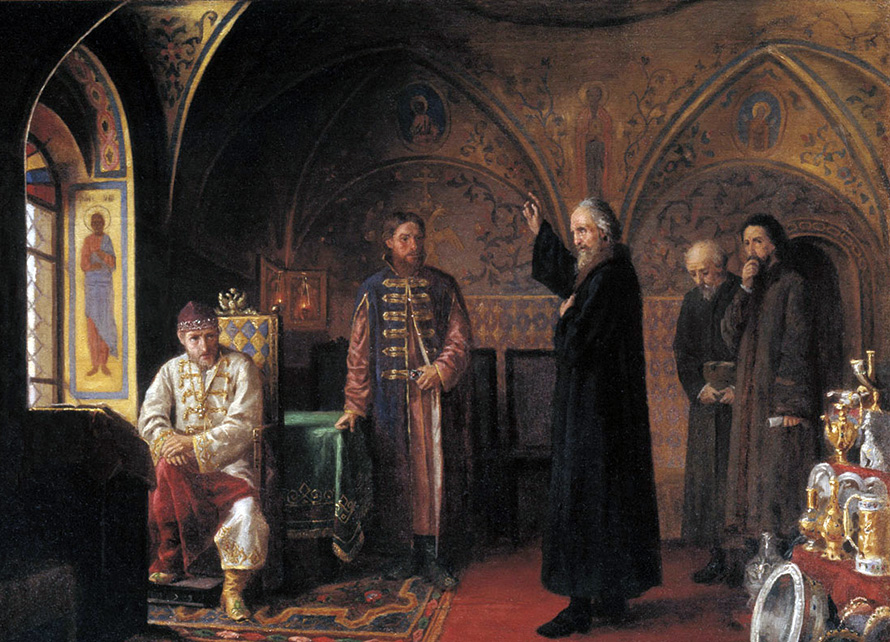
During the reign of Tsar Fyodor Ivanovich (1584-1598) and Boris Godunov (1598-1605), velvet fabrics became even more diverse. At that time, some of them could be bought for a ruble of arshins, and some for 2 rubles or more, that is, velvet was still an expensive fabric.
Tsar Fyodor Ivanovich was very fond of velvet outfits, this was also noted by the ambassadors who arrived to him. His outfits were adorned with large pearls.During the years of his reign, white velvet caftans began to be sewn for the guard of honor, while Ivan the Terrible's guard was dressed in brocade silver caftans and high white velvet hats that widened to the top. The richest velvet outfits belonged to Boris Fedorovich Godunov.
Expensive fabrics in Russia could be seen not only in the royal palace, but also in temples and large monasteries, where festive covers, vestments of the clergy, and decorations for religious objects were sewn. Bookmakers also worked with velvet fabrics. Velvet in Russia was a luxury item, the possession of it spoke of the social status of the owner, of his belonging to the highest circles of the nobility.
For a long time velvet was an imported fabric in Russia. In 1623 the Velvet Yard was founded in Moscow. In the middle of the 17th century, foreign craftsmen from Italy and Germany were invited. But after 1689 the attempt to produce velvet in Russia stopped somewhat. And only in 1717, the first Russian manufactory for the production of silk fabrics, including velvet, began to operate. The raw materials for its production were silk, wool and cotton.
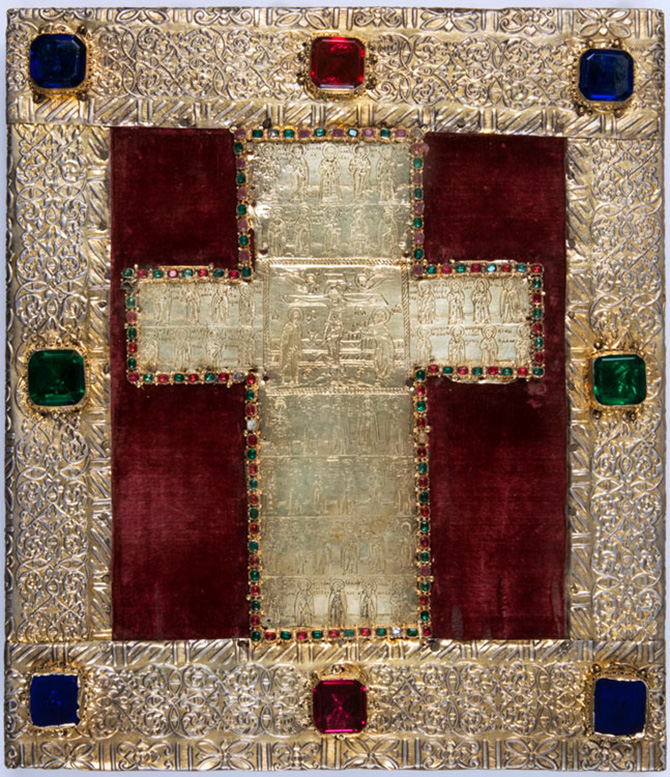
In the princely and boyar environment, clothes were sewn from expensive "overseas" fabrics - silk, brocade, velvet. And in folk life, they used clothes made of linen and hemp canvases, woolen fabrics and felted cloth.

Comments and Reviews
Add a comment
Rating news
Shades of clothing that make women look younger
What shades of hair make women younger: rules and photos
Funny wedding dresses - photos and ideas
12 most expensive down jackets for the winter
How to look 25 at 40: tips from supermodels
Beautiful schoolgirls
Anti-aging haircuts and hairstyles for women
Fashionable skirts for autumn and winter
Fashionable women's trousers for the cold season
Fashionable and stylish sandals for summer 2024
Spring-summer 2024
 Fashionable dresses and tops with thin spaghetti straps
Fashionable dresses and tops with thin spaghetti straps
 Bandana tops: how to wear stylishly and beautifully
Bandana tops: how to wear stylishly and beautifully
 How to put together the perfect men's wardrobe for the summer
How to put together the perfect men's wardrobe for the summer
 Fashionable shorts for spring-summer 2024
Fashionable shorts for spring-summer 2024
 Fashionable skirts for spring-summer 2024: a guide to online shopping
Fashionable skirts for spring-summer 2024: a guide to online shopping
 The most fashionable dresses spring-summer 2024: styles and colors
The most fashionable dresses spring-summer 2024: styles and colors
 Fashionable total look 2024: ideas of images and trends
Fashionable total look 2024: ideas of images and trends
